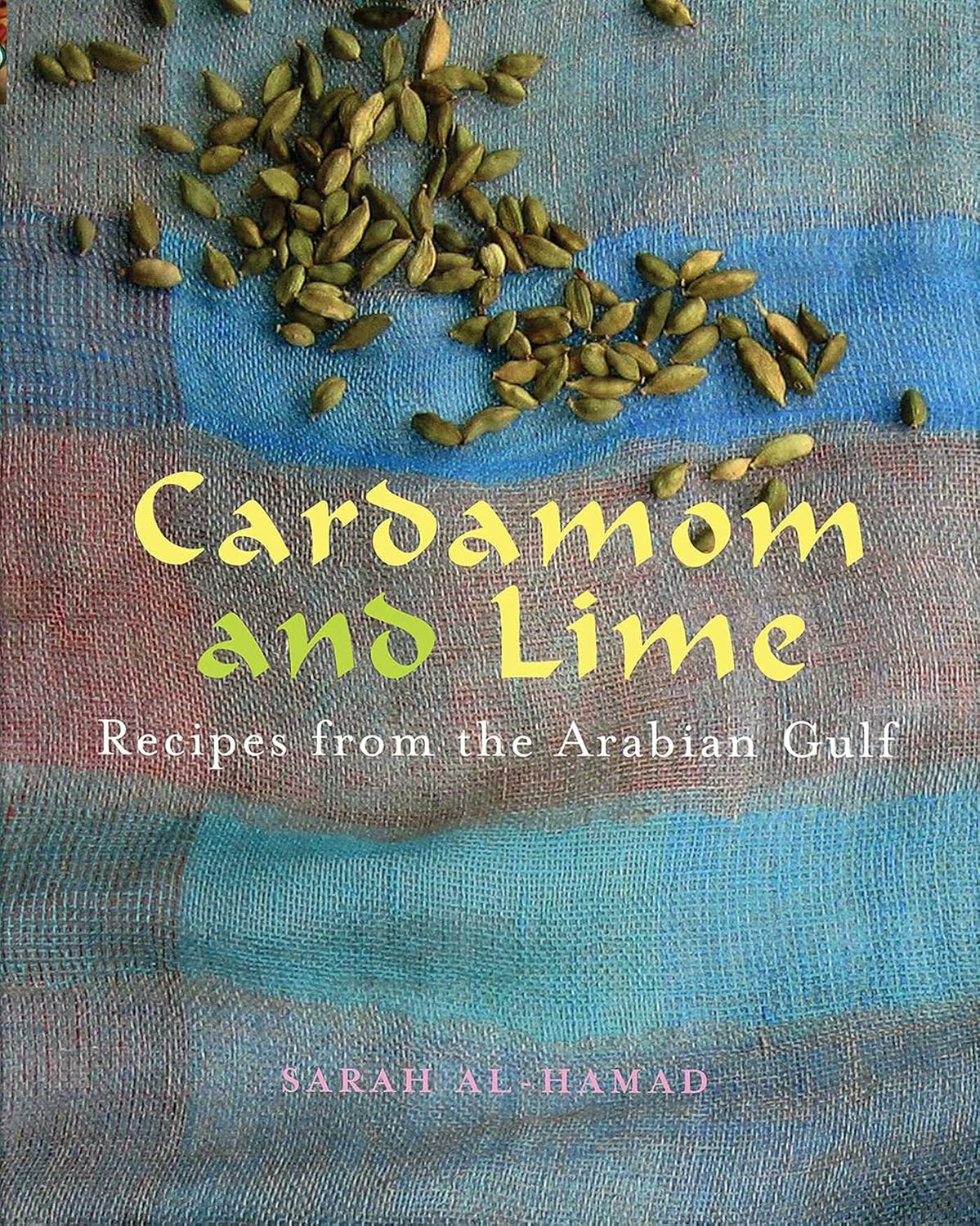
Armchair travel around the world!
Start your reading adventures with our FREE Reading Atlas.

- Around the World in 14 Books
- 7 Thrilling Book Series
- 6 Audiobooks That Are Like Theater For Your Ears



This cookbook (128 pages) was published in March of 2011 by Interlink Books. The book takes you to the kitchens of the Gulf. Melissa read Cardamom and Lime and loved it; it wouldn't be on our site if she didn't recommend it.
Bookshop.org is an online bookstore with a mission to financially support independent bookstores and give back to the book community.

If your idea of a Middle Eastern feast includes dishes like hummus, stuffed grape leaves, kibbeh, and tabbouleh, you’re not wrong. But this book, focused on the unique cuisine of the Gulf, explores vital (delicious) differences.
Saudi Arabia and five other countries — Bahrain, Oman, Kuwait, Qatar, and the United Arab Emirates — surround the Arabian (aka, Persian) Gulf. That position on the sea brought the influence of Indian and African cuisines to the Gulf shore.
Before oil was discovered in the region, most people made a living through trade; Arabia was in a sweet spot for commerce between the Indian and African continents. Traditional Arab boats called dhows brought long-grain rice and spices like cardamom, cloves, saffron, and curry powder from India.
Pearling was also a primary industry, and most of the population of the Gulf was involved in pearling in the late 19th century. But by the 1920s and ’30s, pearling died out in the region. But there’s still a powerful connection to the sea — and that means plenty of recipes that feature fish. (Don’t sleep on the Ultimate Fish on Rice recipe, a whole fish sprinkled with a topping made from dried lime powder, onions, and cilantro and then served on a bed of rice scented with cinnamon and cardamom.)
Because alcohol is forbidden in Arab countries, food is a big deal, a way to celebrate family, offer hospitality, and even compete. Food is ‘a form of one-upmanship… a boredom buster, and an arena for female competitiveness. Recipes are coveted and secretly exchanged; specialties are shown off at gatherings.’
It’s no secret, however, that three ingredients are essential to Gulf cuisine: rice, dates, and dried lime.
Rice is called ‘aish, which means living. According to author Sarah Al-Hamad, it’s ‘inconceivable’ for lunch to be served without rice. One of the most ubiquitous rice dishes is machbous: Lamb, chicken, or fish is braised with onions and spices served with rice simmered in the spicy water leftover from cooking the meat. It’s sort of the Gulf version of rice pilaf or an Indian biryani.
Combining sweet and savory is typical of Gulf cuisine, so rice might be cooked with raisins and topped with crispy fried onions. A bowl of dried dates is always on the table during meals for a sweet nibble between courses or even between bites of savory foods.
Two dishes that make dates the star are a ‘seriously sweet’ rice cooked with date syrup, cinnamon, and rose water — and dates in butter sauce. Whole dried dates are stuffed with walnut houses, then braised in melted butter sauce until they’re enveloped in a crisp buttery shell.
The final essential ingredient is at the opposite end of the spectrum from the dates: dried (or black) limes. Sliced, chopped, or ground into a powder, their flavor is simultaneously citrusy and earthy with a hint of smokiness from the drying process. Dried lime is a key ingredient in meat and veggie stews, like Divine Lentil Soup — a comforting concoction of vermicelli noodles and lentils seasoned with ginger and curry powder.
This book is not a travelogue — although the pages are filled with striking color photos of street markets and food shops. It’s a primer on the unique cuisine of the Gulf made accessible for your home kitchen.
For hundreds of years, the deserts and ports of the Arabian peninsula were inhabited by disparate tribes. Originally the bedouin roaming the deserts relied heavily on a diet of dates and dairy products, rarely meat. Life was difficult, and there was little by way of natural resources… Arabia has long been a center of trade. Its position on the trade route from Africa to India was fortuitous, and it was on the dhows (traditional Araba sailing vessels) from India that the first spices and ingredients entered the region. Fragrant cardamom pods, cloves, saffron threads, cumin seeds, chili and curry powder — and long-grain basmati rice. The food of the Gulf is largely a combination of Indian, Persian, and Turkish cuisine. — Sarah Al-Hamad
Wanna help us spread the word? If you like this page, please share with your friends.
Strong Sense of Place is a website and podcast dedicated to literary travel and books we love. Reading good books increases empathy. Empathy is good for all of us and the amazing world we inhabit.
Strong Sense of Place is a listener-supported podcast. If you like the work we do, you can help make it happen by joining our Patreon! That'll unlock bonus content for you, too — including Mel's secret book reviews and Dave's behind-the-scenes notes for the latest Two Truths and a Lie.
Join our Substack to get our FREE newsletter with podcast updates and behind-the-scenes info — and join in fun chats about books and travel with other lovely readers.

We'll share enough detail to help you decide if a book is for you, but we'll never ruin plot twists or give away the ending.
Content on this site is ©2026 by Smudge Publishing, unless otherwise noted. Peace be with you, person who reads the small type.